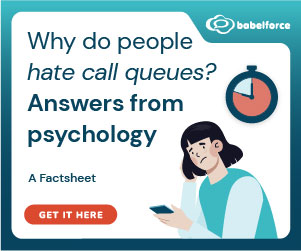What is a Spike?
The term ‘spike’ refers to a sudden and dramatic increase in inbound contact volume. It’s often understood to be a short-term event, taking place over a few hours, although spikes can continue over longer periods.
External factors such as business growth can lead to a general increase in contacts that will continue into the long term. This can make it difficult for planners to understand whether a rise in volume is a spike or actually the new norm.
Genuine spikes in volume that only continue for a limited time are usually caused by a single, simple cause. This could be a technical issue with an online ordering system or legislative changes that drive customers to check the terms and conditions of their service.
The Potential Impact of a Spike
Any significant increase in contact volume will put strain on service levels and may negatively affect KPIs.
Longer queues and lower Customer Satisfaction (CSat) are often the most immediate by-products of a spike, and are likely to contribute to call abandon rates and agent burnout.
Various financial costs may be incurred in attempting to meet the Service Level Agreement (SLA) during periods of increased traffic. More staff, paid overtime, and the use of outsourced overflow capacity are usually major factors.
Some centres may also decrease their hourly sales by reassigning outbound agents to inbound calls, or sacrificing up-sell opportunities to decrease handling times.
To prepare for spikes, contact centres can develop a predetermined ‘mode’ for high call volume. While this mode is activated, agent performance is evaluated against a different set of performance targets which are aligned with the speed and efficiency of interactions.
While spikes can be challenging for contact centre operators to deal with, they are not entirely negative. They can usefully test stress points and contingencies in the business, identifying areas to generate greater resilience.
From the broader business perspective, contact volume spikes are often generated by successful marketing campaigns and greater interest in products and services.
Dealing with Spikes
The unpredictable nature of contact spikes makes them difficult to plan for, especially when they occur outside of the usual peak time for contacts.
Dealing with increased contact volume depends on a strategy that plans for before, after, and during the event.
Before – Robust emergency contingencies, such as outsourced overflow capacity, need to be in place. These kinds of resources allow the contact centre to remain responsive to the demands of customers without dramatically increasing the cost of individual interactions.
Coordinated data gathered from across the business can help to identify likely drivers of traffic. Agents should also be scheduled based on patterns of use for similar occasions and events.
During – It is important to manage customer expectations regarding the speed with which their call will be answered, and advise them of likely waiting times. Providing this information will encourage many to try again at a better time.
This may increase the call abandon rate, as few customers will tolerate long queues. While this may not be ideal, it is preferable for the customer to abandon immediately rather than after a lengthy wait.
After – Understanding what caused the spike will inform planners how they might pre-empt the same event in future.
Sometimes spikes are predictable but are not adequately resourced. For example, new emissions legislation can lead to an increase in the number of vehicles being registered near the licence plate change. This results in increased traffic for contact centres connected to the automotive industry, and the resulting spikes can be accounted for.
Communication between departments can also help to mitigate these kinds of spikes – if there is a planned event that is likely to drive demand, all planners should be informed.
Author: Jonty Pearce
Published On: 10th Feb 2017 - Last modified: 12th Aug 2025
Read more about - Definitions, Call Handling, Customer Satisfaction (CSAT), Terminology


















